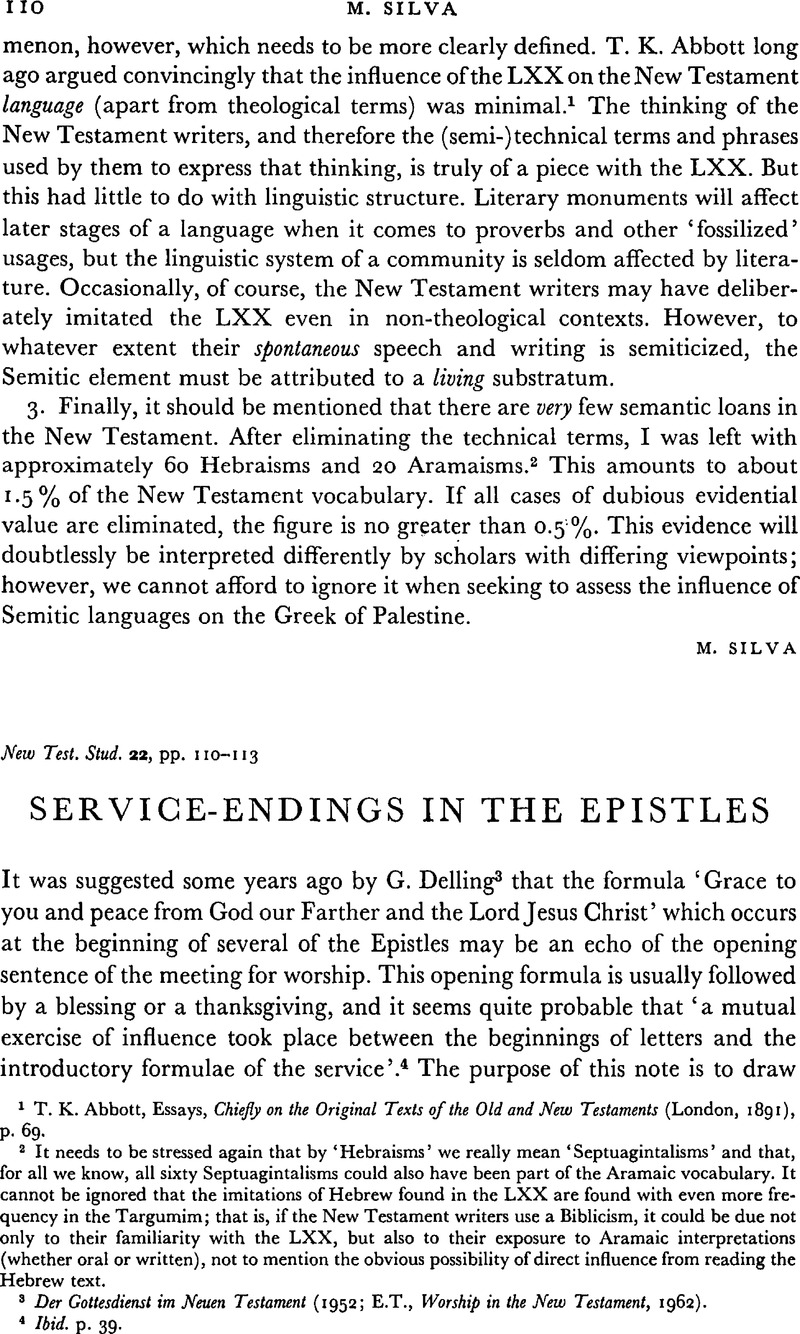Article contents
Service-Endings in the Epistles
Published online by Cambridge University Press: 05 February 2009
Abstract

- Type
- Short Studies
- Information
- Copyright
- Copyright © Cambridge University Press 1975
References
page 110 note 1 Abbott, T. K., Essays, Chiefly on the Original Texts of the Old and New Testaments (London, 1891), p. 69.Google Scholar
page 110 note 2 It needs to be stressed again that by ‘Hebraisms’ we really mean ‘Septuagintalisms’ and that, for all we know, all sixty Septuagintalisms could also have been part of the Aramaic vocabulary. It cannot be ignored that the imitations of Hebrew found in the LXX are found with even more frequency in the Targumim; that is, if the New Testament writers use a Biblicism, it could be due not only to their familiarity with the LXX, but also to their exposure to Aramaic interpretations (whether oral or written), not to mention the obvious possibility of direct influence from reading the Hebrew text.
page 110 note 3 Der Gottesdienst im Neuen Testament (1952; E.T., Worship in the New Testament, 1962).Google Scholar
page 110 note 4 Ibid. p. 39.
page 112 note 1 Justin, Apology 65. 2; Tertullian, De Oratione 18; Hippolytus, Apostolic Tradition 4. 1, 22. 6; Origen, In Rom. hom. 10. 33.
page 112 note 2 Apostolic Tradition 18. 3, 4.
page 113 note 1 F. E. Brightman, Liturgies Eastern and Western, 13. 5–14, 14. 11–13; 44. 2, 43. 24, 49. 32–4; 123. 15; 281. 28, 283. 4–6; 320. 29, 321. 14–16; 473. 18, 28, 29.
page 113 note 2 Messe und Herrenmahl (1926; E.T., Mass and Lord's Supper, 1953), p. 186;Google Scholar‘Traces of a Liturgical Sequence in 1 Cor. 16: 20–24’, in J.T.S. n.s. IV (1953), 38 ff. C. F. D.Moule has shown that ‘Come, Lord’ may be an invitation to judgement, rather than to the eucharist.Google ScholarSee ‘A reconsideration of the context of Maranatha’, J.N.T.S. VI (1960), 307 ff.Google Scholar
page 113 note 3 So Cullmann, O., Urchristentum und Gottesdienst (1950; E.T., Early Christian Worship, 1953), p. 29.Google Scholar
- 1
- Cited by




